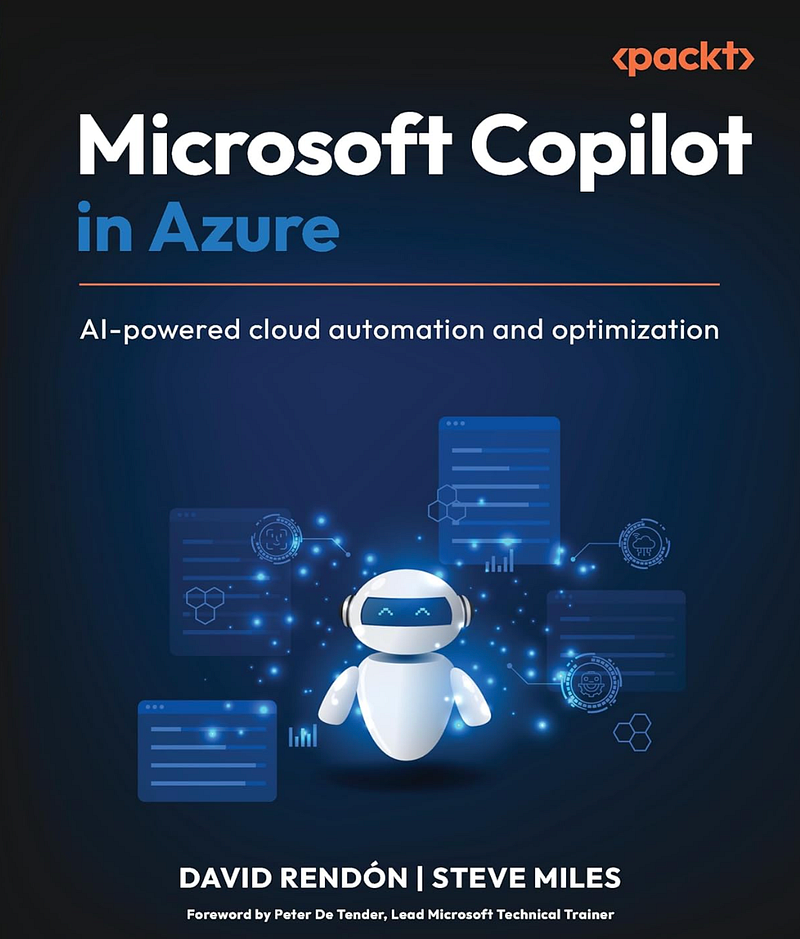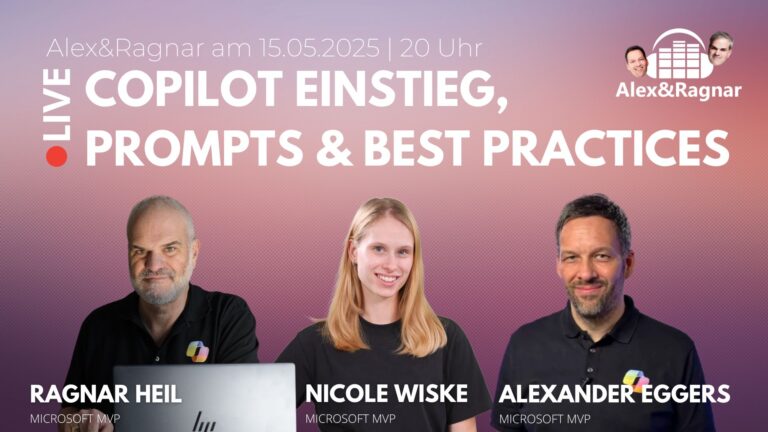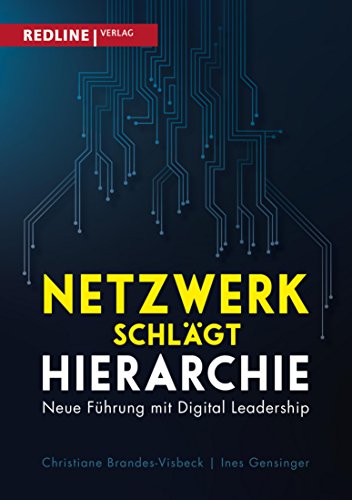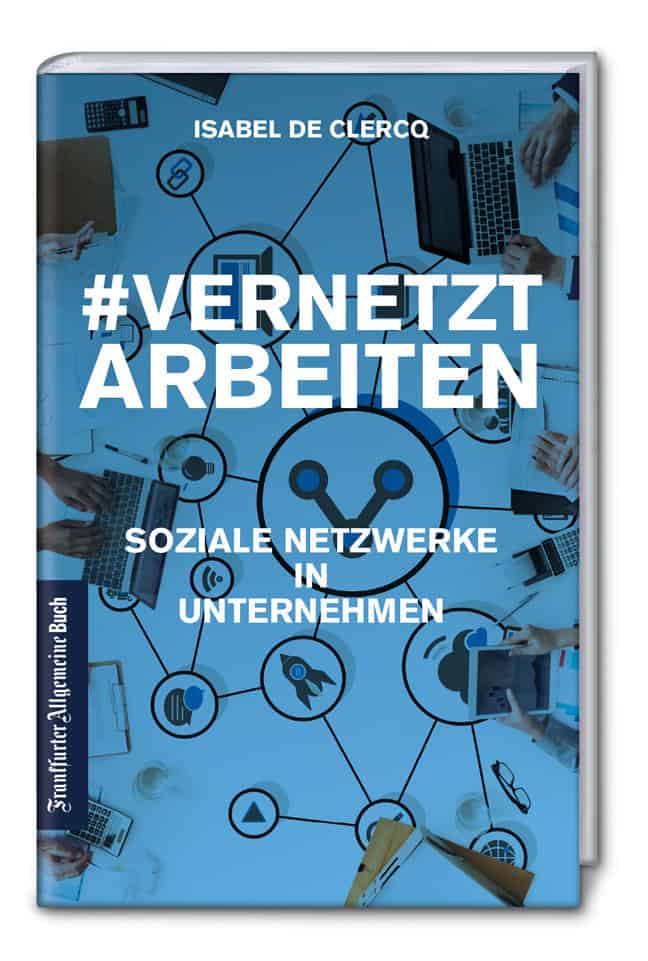Book Review: Why “Microsoft Copilot in Azure” belongs on your desk
Let’s be honest: The cloud is complicated. Really complicated. You’re juggling VMs, managing AKS clusters, optimizing databases, watching costs spiral, and trying to keep security folks happy — all while someone from finance asks why the Azure bill looks like a phone number. Enter Microsoft Copilot in Azure, the book (published by Packt, a publishing house for my M365 Copilot Playbook) that promises to turn your conversational AI into your most valuable colleague. Authored by Azure MVPs David Rendón and Steve Miles, this isn’t just another tech manual gathering dust. It’s your practical guide to making AI do the heavy lifting while you focus on the strategic stuff.

AI as collaborator, not just automator.
The book’s thesis is simple but powerful: Copilot in Azure isn’t just automation — it’s “AI as a collaborator, not just an automator”. This isn’t about replacing you; it’s about partnering with AI to “ask better questions and solve problems more creatively”. Think of it as finally having that expert colleague who never sleeps, never complains, and actually remembers where you left that obscure KQL query from three months ago. The authors promise that “you will gain the knowledge to use Copilot in Azure to improve the way you work with your cloud environments in Azure, making your job easier, more compelling, more exciting, and more efficient”. Bold claim? Maybe. But the 12-chapter roadmap delivers.
Three parts, one destination: operational excellence.
The book is structured in three logical parts. Part 1 lays the foundation — LLM concepts (Prompts, Tokens, Completions), the three-layered architecture (Frontend, Orchestration Layer, AI Infrastructure), and crucially, security. Security gets serious attention here. The book explicitly states that Copilot “will never directly access your Azure resources”. Instead, it uses Retrieval-Augmented Generation (RAG) to maintain data integrity, and it operates strictly “within the security context of your user account”. All actions? Logged in to Azure activity logs under your name. No sneaky AI bypass here.
Part 2 gets practical. Really practical. You’ll learn to deploy Windows and Linux VMs, manage AKS clusters with autoscaling, streamline PaaS deployments with App Service and Azure Functions, and even integrate AI Shell for code suggestions. Chapter 7 alone is worth the price — AI-driven database optimization for Azure SQL and MySQL, covering query optimization, index tuning, and predictive performance management. Your DBA colleagues will either love you or wonder what you’re suddenly so good at.
Part 3 elevates everything to strategic governance. This is where Copilot transforms from tactical helper to FinOps and SecOps enabler. Chapter 10 tackles cost management: identifying anomalies, forecasting budgets, eliminating idle resources, and optimizing reserved instances. Chapter 11 integrates Microsoft Defender for Cloud and Azure Policy for automated compliance and security remediation. The book positions Copilot as “a single, conversational interface enforcing the three critical governance domains: Identity (RBAC), Finance (Cost Optimization), and Security (Compliance/Defender)”. That’s exactly what every cloud architect needs.
What you’ll actually learn
By the end, you’ll master AI fundamentals, configure RBAC, deploy and manage infrastructure (VMs, AKS, App Service, Functions), perform real-time monitoring with AI-assisted root cause analysis, and leverage AI for database tuning. You’ll also become proficient in AI-driven cost optimization and security policy implementation. The authors promise that “Copilot in Azure empowers you to build smarter, faster, and more innovative applications than ever before”. It’s not hyperbole when you see the depth of coverage.
Why you should buy it
Three reasons: First, it accelerates productivity. The book demonstrates Copilot’s ability to “simplify complex tasks,” turning hours of CLI command assembly into single, conversational prompts. Second, it guarantees governance and cost accountability — critical if your finance team is breathing down your neck. Third, expert authorship. These are Azure MVPs who’ve covered advanced topics like AI Shell integration and explicit alignment with the Azure Well-Architected Framework.
The book’s brilliance, as the foreword notes, lies in its clear, approachable style. Complex technical details are presented for immediate adoption, not academic admiration. And here’s the kicker: the final chapter looks ahead to Agentic solutions and multicloud integration, assuring you that the skills you acquire won’t be obsolete next quarter.
My verdict
If you’re an Azure architect, engineer, administrator, or consultant managing cloud complexity, this book is your roadmap. It’s practical, comprehensive, and built for the real world where budgets matter, security is non-negotiable, and nobody has time for guesswork. “Microsoft Copilot in Azure” doesn’t just teach you a tool — it teaches you a new way to work. And in an era where AI collaboration is no longer optional, that’s precisely the competitive advantage you need.
Now go buy it. Your Azure bill will thank you.






